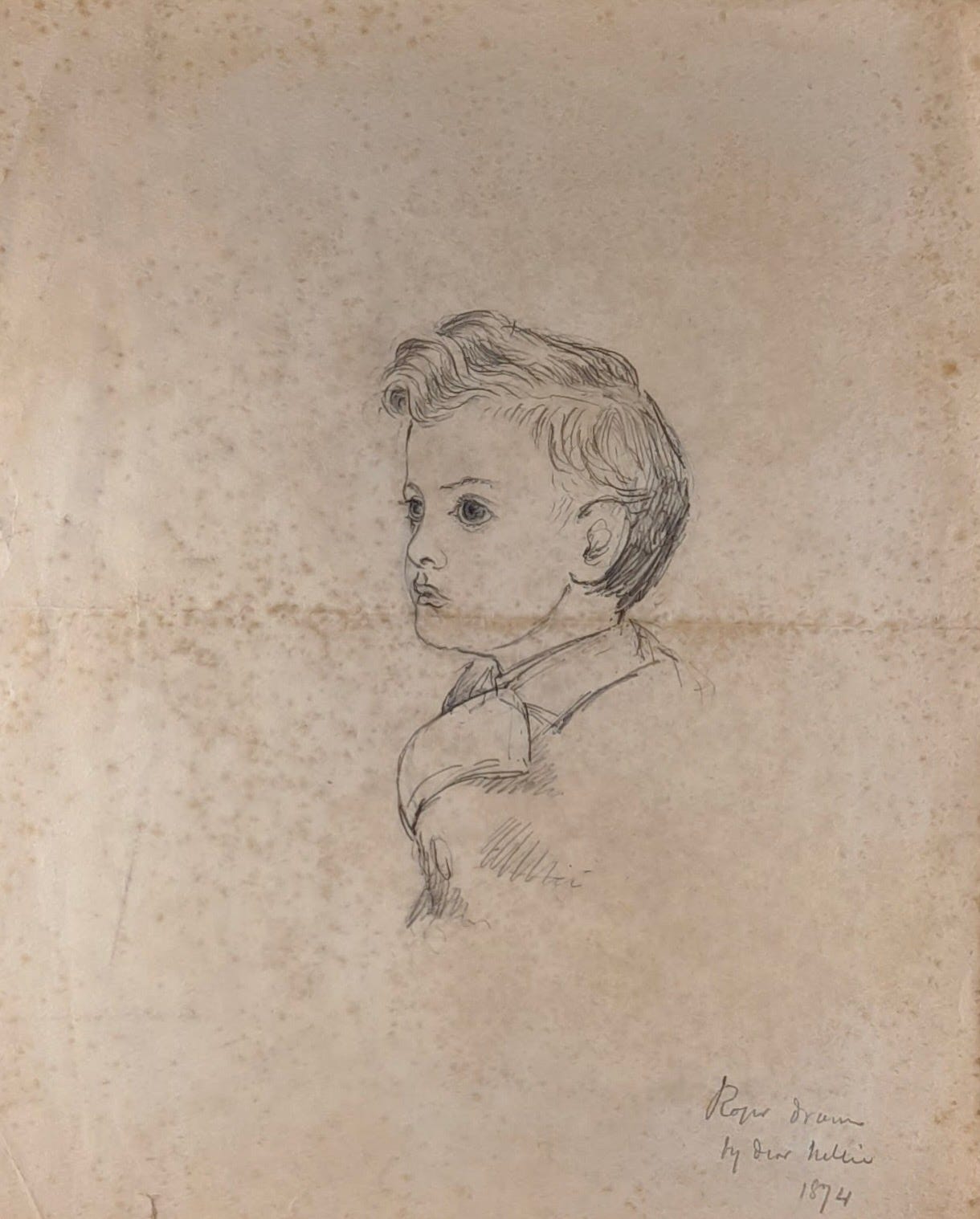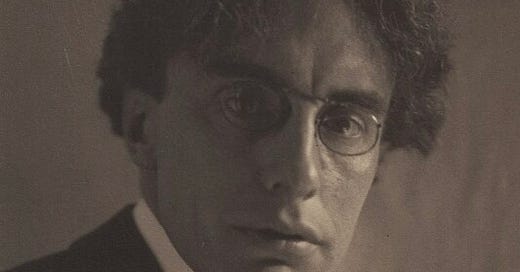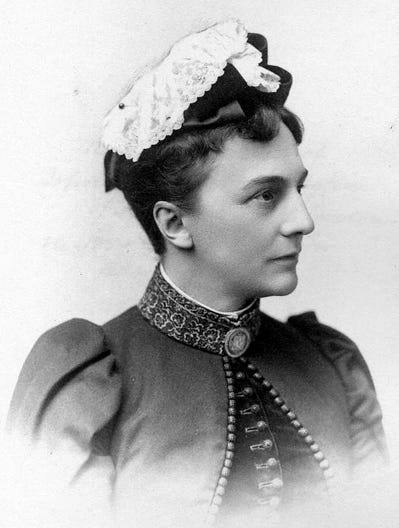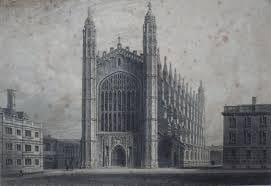Roger Fry: Life Before Bloomsbury
"Incomparably the greatest influence on taste since Ruskin."
As I understand it, art is one of the chief organs of what, for want of a better word, I must call the spiritual life.
Roger Fry1
Roger Eliot Fry was a painter, curator, designer, and Britain's leading art critic during the first half of the twentieth century. In 1910, he organised the revolutionary exhibition Manet and the Post-Impressionists, introducing contemporary French art to the British public. He was also a prominent member of the Bloomsbury Group, a circle of artists, writers, intellectuals and friends who shared a passion for social progress and creative innovation and contributed significantly to the early twentieth century's art, literature and thinking.
Incomparably the greatest influence on taste since Ruskin… In so far as taste can be changed by one man, it was changed by Roger Fry.
Kenneth Clark, Art Historian2
The Grove
Roger was born into a wealthy Quaker family on 14th December 1866 - the fifth child of Judge Sir Edward Fry and Mariabella Hodgkin. His siblings included peace and social reformer Joan Mary Fry, bryologist and astronomer Agnes Fry, and prison reformer Sara Margery Fry.
Edward and Mariabella, whose families had been Quakers since the seventeenth century, were married at a Friends’ Meeting House in Lewes in April 1859. They returned to No. 6 The Grove, Highgate, London, to start their family - moving to No. 5, a larger property next door, in 1872. But it was the garden of No. 6 that remained in their son’s memory.
This garden is still for me the imagined background for almost any garden scene that I read of in books.3
Young Roger respected both of his parents, but theirs was a devout Quaker home of Victorian domesticity. They had a high moral code, a simple lifestyle, and a mistrust of most forms of entertainment. His father did enjoy ice skating, though, and would take the family to a local skating pond when the weather permitted.
On those days he was all laughter and high spirits and there seemed no danger of suddenly finding oneself guilty of moral obliquity, which at other times seemed suddenly to be one’s situation, without knowing exactly why or how it occurred, for the moral code was terribly complicated and one didn’t always foresee where it would catch you tripping over some apparently indifferent and innocent word or deed. And, when it did, my father’s voice was of such an awful gravity that one shrunk at once to helpless self-condemnation and overpowering shame.4
When Roger was around ten or eleven, his father was appointed to the Bench. As a junior member, he was also called to be a vacation judge, which meant cancelling the family’s annual seaside holiday. Instead, the Frys rented a house near Leith Hill, the home of two elderly ladies - the Miss Wedgewoods. Like the garden of No. 6 The Grove, the house remained in Roger’s memory.
[It] was furnished with a good deal more taste than our own, and I suppose in a dim, as yet unconscious way, I was sensitive to such things, for the memory of it remains as a peculiarly happy interlude in my life.5
However, life was set to change when clergyman and headmaster Mr Sneyd-Kynnersley visited them at Leith Hill, and Mariabella informed her son that it was time for his formal schooling to begin.

Sunninghill House
In 1877, aged eleven, Roger arrived at Sunninghill House in Ascot with a silver watch from his father, a Bible from his mother, and warnings from both against sin.
He excelled in his classes immediately, made many friends, and was happy to tell his parents in a letter that the food was good, that he had his own garden, and that he was allowed to keep two snakes as pets.
His time at the school would have been tolerable if not for Mr Sneyd-Kynnersley, who soon revealed himself to be an uneducated man who enjoyed flogging his students every Monday morning.
The birch rod was a serious matter to me, not that I dreaded it particularly for myself, because I was of such a disgustingly law-abiding disposition that I was never likely to incur it. But as I was from the first and all through either first or second in the school, I was bound ex officio to assist at the executions and hold down the culprit … it has given me all my life a morbid horror of all violence between men.6
Clifton College
In 1881, he graduated from Sunninghill and enrolled at Clifton College in Bristol, studying under Canon Wilson. Wilson was an academic and envisioned Clifton as a college devoted to high-minded men and intellect.
Like his father, Roger was interested in the sciences and spent much of his time in the college laboratory conducting various experiments.
His letters home were largely filled with accounts of these experiments in which his parents were deeply interested; “one was to find out how fast bodies fall by experiment; and another, the specific gravity of candle grease… I got a block of ice from the fishmongers with which I illustrated regelation by cutting it in half with a wire.7
Though he excelled in his studies, he was not inspired or stimulated by the learning environment at Clifton until 1882, when he formed a close friendship with a boy named John Ellis McTaggart - who would grow up to become a famous metaphysician and philosopher.
He and McTaggart would take regular Sunday evening walks and discuss Canon Wilson's sermon from that day. Though McTaggart was an atheist, he didn't disclose this to his devout Quaker friend, who still attended Friends' meetings with his parents. But McTaggart did encourage Roger to think independently and ask the important questions—and apparently had a far greater influence on him than the Clifton schoolmasters.
Not surprisingly, Edward and Mariabella disapproved of this friendship, and following an unsuccessful visit home with his friend, Roger wrote to his mother in an attempt to allay her fears.
I am very sorry you were disappointed in McTaggart, though I do not feel so sure that you would be if you could see him alone as I do. He is, whatever his views and manners may be, one of the most thoughtful and conscientious boys I know.8
It was never in doubt that Roger would study science at a higher level, and he was advised by one of Clifton’s masters that he should apply to Oxford University. Roger was set on Cambridge, though, and Canon Wilson, aware of his lack of confidence, suggested that the smaller college of King’s would be more suitable rather than the larger Trinity College, which McTaggart would be attending. In December 1884, he successfully applied for a scholarship to study the Natural Sciences tripos at King’s and enrolled in October the following year.
[This meant] an end to Sunninghill and its shrivelled pines and dirty heather and Monday morning floggings, and an end to Clifton and its good form, its Christian patriotism and its servility to established institutions. From his private school he had learnt a horror of all violence, and from his public school a lifelong antagonism to all public schools and their ideals. He seldom spoke of those years, but when he did he spoke of them as the dullest and, save for one friendship, as the most completely wasted of his life.9
King’s College, Cambridge
Arriving at Cambridge in 1885, Roger moved into lodgings with McTaggart. Shortly after, he formed another close friendship with history student Charles Robert Ashbee, who was three years his senior. He and Ashbee were both interested in architecture and would leave Cambridge to visit ancient buildings, often sketching them. It was likely due to his friendship with Ashbee that Roger was elected to the Cambridge Fine Art Society in 1886.
Fry has been to me a solace in this last year and I have learnt a great deal from him. Of his character principally, and of his artistic side, for he has the aesthetic quality much further developed than I… He with the grand Quaker intellectual foundation has been gifted with the artist’s soul and imagination.10
In 1887, he met and became friendly with philosophy student Goldsworthy Lowes Dickinson, who put him forward to the Apostles, the university’s elite semi-secret debating society founded by George Tomlinson, JFD Maurice and John Sterling in the late 1820s. Their friendship would last throughout Roger’s life, but for Dickinson, there was an unreciprocated attraction.
This first love of mine lasted, in this form, a year or two. That phase was ended by Roger falling in love with a woman… I learned what I had known, yet also had not known, that his feeling for me was different from mine for him.11
Roger’s interest in art was further encouraged when J. H. Middleton became Slade Professor at Cambridge. Though still studying the Natural Sciences, he attended Middleton’s lessons on Italian art and regularly visited the Fitzwilliam Museum.
He graduated from King’s in 1889 with a First in the Natural Sciences tripos but was determined to become an artist. Cambridge had been, for Roger, a period of self-discovery that would influence his intellectual development throughout his life.
Thank you for reading! If you enjoyed this biography, please like and/or share. And, as always, I would love to know your thoughts in the comments. If you wish, you can also Become a Member and/or visit the Anthology Archive for the complete biography, gallery, and library collection so far. Until next time…
Images:
Images on Beyond Bloomsbury are usually credited. I conduct thorough picture research, but please let me know if you believe a credit needs to be added or corrected. Thank you!
Sources and Recommended Reading:
Chilvers, Ian, Oxford Dictionary of Art and Artists (Oxford Paperbacks, 1990)
Fry, Roger, Art and the Market: Roger Fry on Commerce in Art, Selected Writings (University of Michigan Press, 1998)
Spalding, Frances, Roger Fry: Art and Life (Black Dog Books, 1999)
Woolf, Virginia, Roger Fry: A Biography (Houghton Mifflin, 1976)
Roger Fry, Art and the Market: Roger Fry on Commerce in Art, Selected Writings (University of Michigan Press, 1998)
Ian Chilvers, Oxford Dictionary of Art and Artists (Oxford Paperbacks, 1990)
Virginia Woolf, Roger Fry: A Biography (Houghton Mifflin, 1940), p. 5.
Woolf, p. 10.
Woolf, p. 16.
Woolf, pp. 19-20.
Woolf, p. 23.
Woolf, p. 25.
Woolf, p. 27.
Frances Spalding, Roger Fry: Art and Life (Black Dog Books, 1999), pp. 19-21.
Spalding, p. 25.













Thank you for sharing this utterly fascinating and very well informed article about Roger Fry. It has inspired me to learn more about this man whose influence has enriched our history.
Aside from the fascinating information about Roger Fry, I learned what a bryologist is, having never heard that word before in my life. Great stuff Victoria!